
 |
WELCOME TO CHESHIRE BIODIVERSITY
|
|
| HOME | INTRODUCTION | SPECIES | HABITATS | PARTNERS | WHAT'S NEW | WHAT'S ON | OTHER INFO |
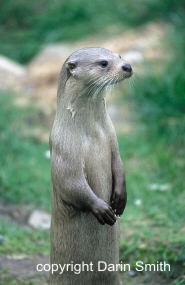
Appearance
The otter is a long slender bodied mammal with brown fur, which is quite often pale on the underside. The head to body length can be up to 120cm. The tail makes up approximately a third of the body length. Otters have small ears and webbed feet. To compensate for the lack of a fat layer they have a double layer of fur to trap air and keep them warm in the water. The average weight for males is 10.1kg, and around 7kg for females.
Habitat
Otters may inhabit any unpolluted body of freshwater, including lakes, streams, rivers, and ponds, as long as there is good supply of food. Otters may also live along the coast, in salt water, but require regular access to freshwater to clean their fur.
Food
An otter's diet mainly consists of fish but can also include birds, insects, frogs, crustaceans and sometimes small mammals.
The otter is listed on Annexes II and V of the EC Habitats Directive (EC/92/43), Annexe II of the Bern Convention and Appendix I of CITES and is classified by the IUCN as 'vulnerable'. The otter is also listed under two schedules of the Wildlife and Countryside Act 1981 Schedules 5 & 6.
The otter is short-listed on the UK Steering Group Report, Volume 1 (1995) and as such the report contains a costed Biodiversity Action Plan for the otter. A national Otter BAP Steering Group has been set up which meets regularly and is led by a partnership between the Wildlife Trusts and the Environment Agency.
The fourth National Otter Survey of England was conducted between January 2000 and February 2002. The results of this survey were published in 2003 and show that otters are becoming more widespread in the rivers of England. The survey found positive signs of otters at 55% more sites than in the 1994 survey. In fact, in every one of the 12 regions and catchments areas surveyed, there was an increase in the number of sites where the signs of otters were detected, representing a 527% increase since 1979.
The scale of the increase varies from area to area and at the time of this national survey, otters still only occupied one third of the areas that could support a population. The survey has shown that in favourable conditions, such as cleaner rivers and waterways, greater fish stocks, sympathetic wetland and riverside management and the creation of new bankside habitat, a healthy breeding population can recolonise large areas relatively quickly.
Joining up populations via the network of waterways is going to be crucial to the future increase of otter populations. The key areas are river catchments in North Shropshire, South Cheshire and the Lower Severn as they provide links from strong populations in Wales to areas where colonisation has been slow in the past.
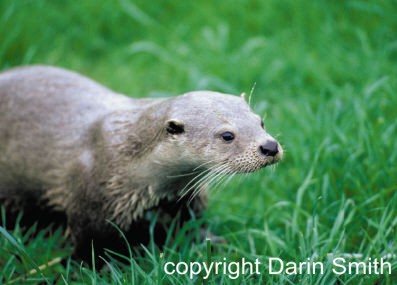 |
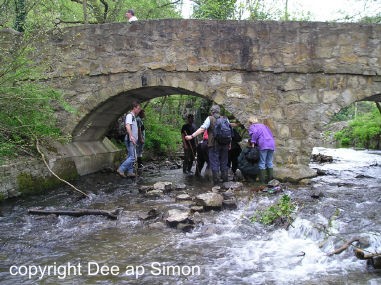 |
As indicated by the results of the fourth national survey, otters have shown a dramatic recovery in some areas of the country. This is a great conservation success story, however the Cheshire otters have not shown the same increase in numbers. They are here but with the wealth of waterways and water bodies in the county, the population is still lower than would be expected.
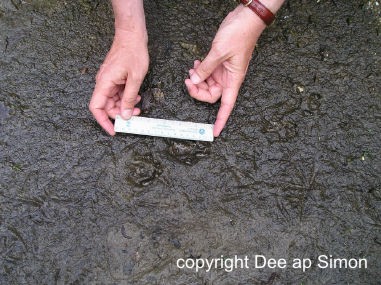 |
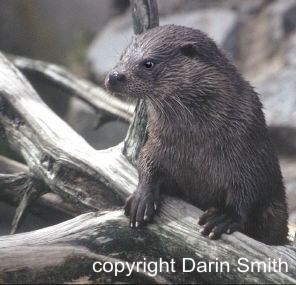 |
The Cheshire Otter Local Biodiversity Action Plan (LBAP) Group meet quarterly. The group is made up of representatives from the Environment Agency, Cheshire Wildlife Trust, Natural England, Countryside Council for Wales, Vale Royal Borough Council, Cheshire County Council, Macclesfield Borough Council, Chester City Council, The Mersey Basin Campaign, Farming and Wildlife Advisory Group, British Association of Shooting and Conservation, Chester Zoo, rECOrd, United Utilities, British Waterways. The group meets to discuss projects relating to otters in Cheshire and promote joint working.
Many practical projects are facilitated by the group, including otter holt building and bankside improvements. One of the main drivers for improvement to otter habitat is the Environmental Stewardship Scheme, providing funding to landowners for habitat improvements for otters.
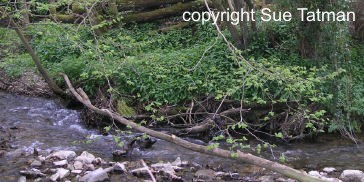 |
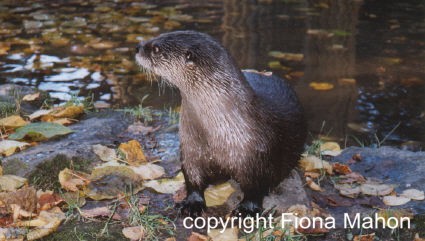 |
Progress can be recorded in one of four categories each year to fit with BARS ie: no progress/ not started, some progress, good progress, action completed with a summary of the details.
National Target 1 |
Maintain the current distribution of the otter throughout the UK at the 2005 baseline of 2219 occupied 10km squares. (878 in England) |
||
| Local Target 1 | Maintain current distribution of otters in Cheshire at 2005 baseline of x occupied 1km squares. |
||
Local Objective |
Actions |
Delivery Responsibility |
2006 Progress |
1a Update the database of records in Cheshire
|
Resurvey all sites surveyed for the national survey (2000-2002) by end of 2008 |
National BAP Group |
|
Re-survey all sites covered in the Middlemarch Survey between 2008-2010 |
LBAP Group |
|
|
Set up a video monitoring project and identify at least 6 sites suitable for the equipment by summer 2007 |
CWT and LBAP Group |
|
|
Map the location of all artificial holts in Cheshire by summer 2007 |
CWT |
|
|
Set up a system for monitoring use of artificial holts by end of 2007 |
CWT |
|
|
Set up a programme for volunteer surveyors by end 2007 |
CAT & LBAP Group |
|
|
Recruit new volunteer surveyors to cover Weaver, Gowy and Dee catchments by end 2007 |
CWT |
|
|
| Maintain an involvement with the emerging Dee Otter Project. Attend meetings | LBAP Group | ||
Ensure all data is sent to rECOrd and all actions are inputted into BARS |
LBAP Chair/LBAP Coordinator/EA |
|
|
1b Raise awareness and understanding through training events and promotional activities |
Run a seminar on Otters and Roads for +highways engineers in Cheshire to help achieve effective mitigation and enhancement for otters by end of 2006. |
CWT |
|
Lead a training event for Defra RDS on otter survey and habitat enhancement, October 2006 |
LBAP Chair |
|
|
Incorporate otter information into training events organised for Local Authority Planning Officers – one training course per year |
Local Authority Ecologists and CWT |
|
|
Upload to Countdown website the landowner leaflet advising them about habitat enhancement and management for otters by end of 2006. |
LBAP Chair |
|
|
Distribute “Know Your Otter” cards and landowner leaflets at public events – at least 4 events per year |
LBAP Group |
|
|
Distribute “Know Your Otter” cards to angling clubs to raise awareness by end of 2006 |
|
|
|
1c Coordinate otter work across Cheshire |
Ensure that the Otter LBAP Group meets 4 times per year to forward the actions within this plan |
LBAP Chair |
|
Ensure that all organisations involved in otter work are represented on the group with an annual review in December |
LBAP Chair |
|
|
1d Ensure otters are given due consideration within the planning process |
Comment on planning application that have the potential to effect the otter population |
Local Authority Ecologists, CWT, EA |
|
National Target 2 |
Expand the distribution of otters to achieve 85% (2377) occupancy of 10km squares across the UK by 2015. (997 in England) |
||
| Local Target 2 | Expand the distribution of otters in Cheshire to achieve ?% occupancy of 1km squares by 2015. |
||
Local Objective |
Actions |
Responsibility |
2006 Progress |
2a Encourage population expansion by natural recolonisation of former sites through habitat enhancement
|
Build 3 artificial otter holts on suitable sites every year |
NE, FWAG, CWT, Local Authorities |
|
Advise landowners about sympathetic management of riparian habitats for otters by targeting two Higher Level Stewardship Schemes for holt building every year in Cheshire |
NE, BASC |
|
|
Identify areas with poor water quality from Environment Agency fisheries, biological and chemical water quality data by the end of 2006 |
EA, LBAP Chair |
|
|
Lobby for areas with poor water quality to be included within AMP 4 (2010) |
EA, LBAP Group |
|
|
Identify current habitat quality and areas for enhancement – commission a report in 2006 |
EA |
|
|
Target habitat enhancement in areas identified in the EA report through CrBAP and Local Authority grant schemes. At least £1000 of funding for enhancement per year. |
LBAP Coordinator, Local Authority Officer, LBAP Chair, CWT, NE |
|
|
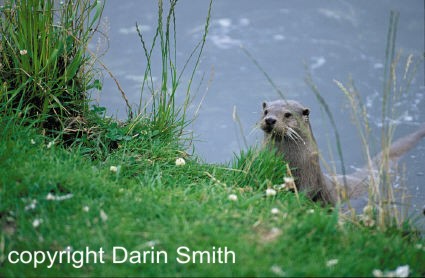 |
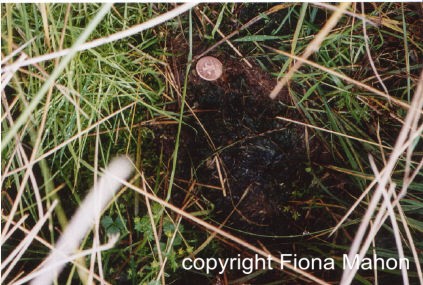 |
| 2006 Action Completed |
|
2005 Action Completed |
|
2004 Action Completed |
|
2003 Action Completed |
|
1997-2002 Action Completed |
|
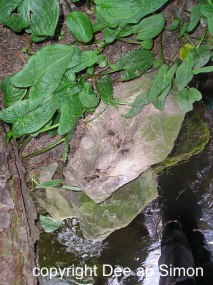 |
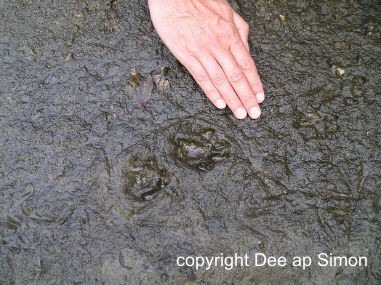 |
IUCN Red List of threatened species - International www.iucnredlist.org
UK BAP for Otters - www.ukbap.org.uk/UKPlans.aspx?ID=428
Lancashire Biodiversity Partnership`s Species Action plan: www.lbap.org.uk/bap/species/otter.htm
Staffordshire Biodiversity Action Plan: www.sbap.org.uk
Environment Agency Website www.environment-agency.gov.uk
Vale Royal Borough Council Otter Species Recording card
Know Your Otter Card, produced by the Cheshire region Biodiversity Partnership including help from the Environment Agency and Chester Zoo
Otter Video Monitoring Project
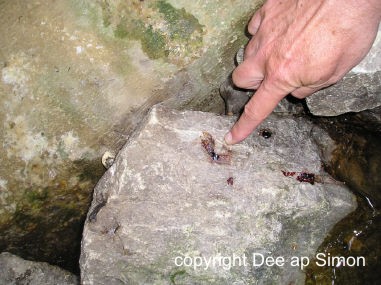 |
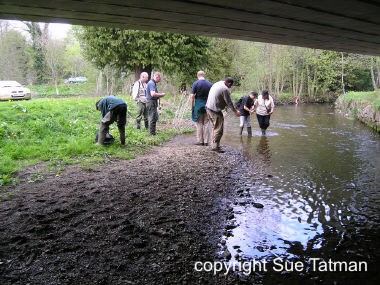 |
To help us with our conservation work for the Otter we need your help. If you think you have seen an otter or mink, or signs of these animals, such as footprints or droppings, please fill out our online form and press 'Submit' to send it back to the Otter LBAP coordinator. The data will be sent to the local biological records centre, rECOrd. Don't worry if you can't complete the questions fully. All information is useful.
If you find a dead otter, please contact Cheshire Wildlife Trust immediately on 01948 820728.
Join Cheshire Mammal Group. More information can be found at http://www.consult-eco.ndirect.co.uk/lrc/mamg.htm
| LBAP Chair | Elaine Tatham, Vale Royal Borough Council, 01606 867748 |
National Lead Partner |
Graham Scholey, Environment Agency |
BASC British Association of Shooting and Conservation
CCC Cheshire County Council
CrBAP Cheshire Region Biodiversity Action Plan
CWT Cheshire Wildlife Trust
EA Environment Agency
FWAG Farming and Wildlife Advisory Group
LBAP Local Biodiversity Action Plan
MBC Macclesfield Borough Council
NE Natural England
VRBC Vale Royal Borough Council
| HOME | INTRODUCTION | SPECIES | HABITATS | PARTNERS | WHAT'S NEW | WHAT'S ON | OTHER INFO |
|